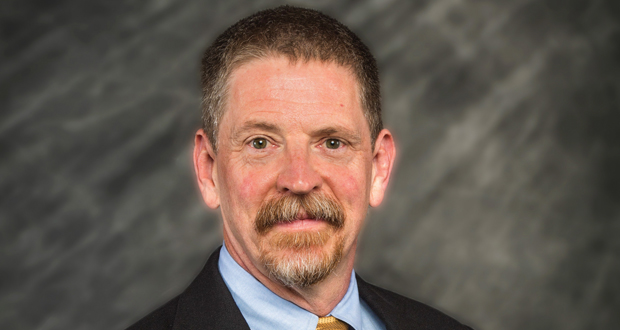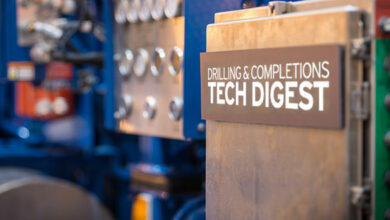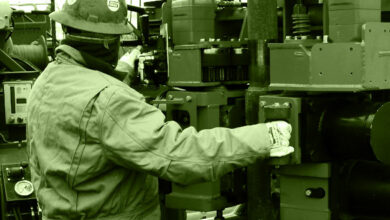Perspectives: Matt Isbell, Hess – Integration, standardization will help propel well construction performance to the next level

By Linda Hsieh, Editor & Publisher
For some people, figuring out what they want to do in life can be a long process of self-discovery throughout their young adulthood or even into their 20s or 30s. But for others, like Matt Isbell, knowing that he wanted to be a mechanical engineer came like natural instinct, even at a young age. “From as old as I knew what a mechanical engineer was, that’s been my goal,” Mr Isbell, Senior Drilling Engineering Advisor for Hess, said. “I like to see how things work, and I love the idea of technologies and inventing new solutions.”
It also helped that, through his dad’s job as a chemical engineer, he had many opportunities throughout his childhood to visit refineries and fertilizer plants around the US. Having the chance to see large machinery at work only fueled his curiosity. “I knew mechanical engineers were the ones who got to design them. That was what I wanted – to work with big pieces of equipment and make them better.”
Upon graduating from the University of Texas at Austin with a degree in mechanical engineering in the late ‘80s, Mr Isbell landed in the oil and gas industry, working as an R&D engineer for what was then Hughes Tool Company.
One of his first projects, he recalled, was to try and reinvent roller cone drill bits so they could outperform PDC bits in soft rock. PDC bits were still an emerging technology at the time. The effort went on for about three years before the engineers decided it couldn’t be done. Although the project wasn’t technically a success, it turned out to be a valuable lesson for a young engineer like Mr Isbell was at the time: No matter how much time and effort you put into R&D, “you cannot defy the laws of physics,” he said.
Over the next 23 years, Mr Isbell gained a wealth of drilling expertise through different positions with Hughes Tool Company and its various entities, including Hughes Christensen and Baker Hughes. His work included redesigning and upgrading the company’s drilling simulator, as well as observing field challenges around the world and developing laboratory tests to evaluate new drill bit designs and adapting them to various applications. Along the way, he also added 28 patents and over 33 technical papers to his name.
But the work that Mr Isbell said he’s most proud of from his time with Baker Hughes was actually around the management of people. He had helped to create a program for the company’s new-hire field engineers, focusing not so much on developing their engineering skills but on making sure they knew how to apply those skills out in the field.
“The culture part is always the hardest part to teach,” he said, adding that the program was designed to provide new engineers with an immersive learning experience. “Not only did they get to meet the company representatives and drillers, but they also got to see what a field salesman does and the logistics of the drill bits. That did a great job of grounding them and prepared them for a career in the oilfield.”
Focus on optimization, standardization
In 2012, Mr Isbell joined Hess when he got the opportunity to help the company design and launch its drilling limiter program, SmartDrill. It focused on identifying the factors that limit drilling performance – whether it’s the drill bit, the motor or rock hardness – and then redesigning the drilling system to counter that limiter.
In helping to deploy SmartDrill in the Bakken, Mr Isbell said he quickly realized that the drillers and company representatives out in the field knew the formations “like the back of their hands. They knew what the problem was; they just couldn’t tell you what the solution was.” So, instead of developing tools that helped them to identify the limiters, the program focused on deploying new technologies to address those limiters they already knew about.
This work pivoted Mr Isbell’s focus toward drilling optimization, process automation, real-time systems and now to standardization, where the goal is to create value by removing variability in the well delivery process. Hess is now working on a system where its drilling contractors and service providers can input their standard procedures next to standardized, time-based objectives input by the operator. “You can’t improve what you can’t measure. Standardization will allow everyone to have visibility into what the objectives are, so we can measure the delivery of the plan and sustainably improve it over time,” he said.
A key piece of this improvement process will involve the industry’s ongoing work to integrate discrete automation technologies. For example, you may already have a system for automated sliding and another system that automates coming off or going to bottom, but those systems are not fully integrated yet. “That’s the thing we’re working on today: How do you take a plan to drill a stand of pipe and then do that 200 times safely and efficiently to deliver a 20,000-ft well?” DC




